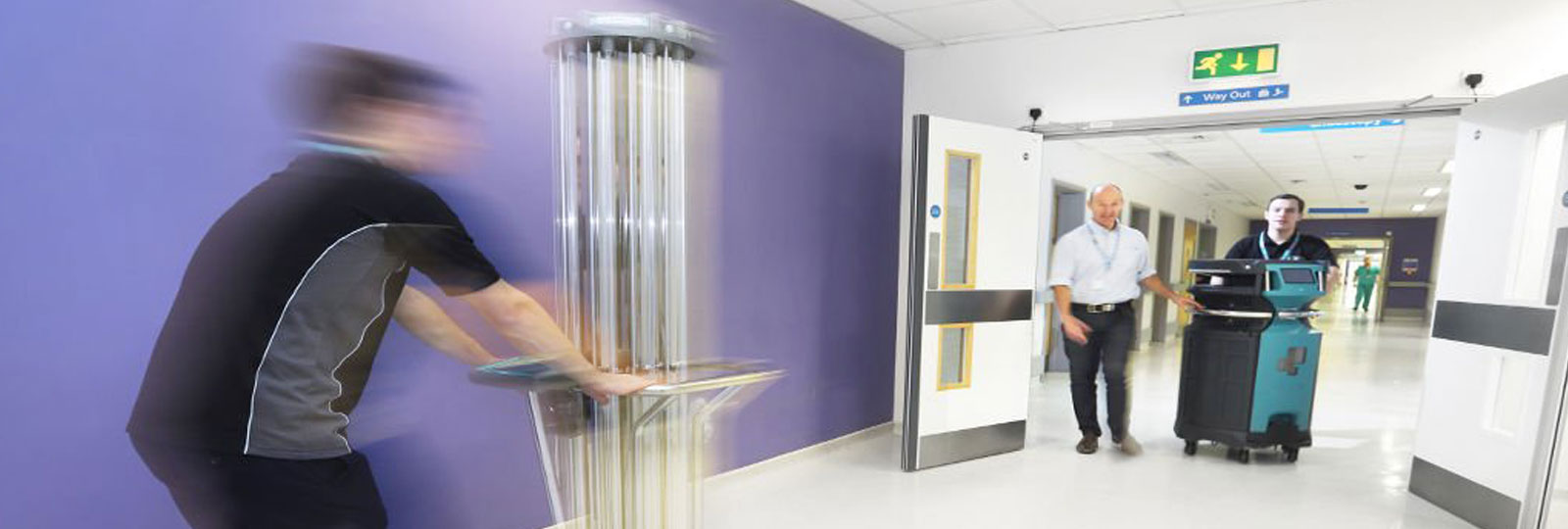
An outbreak is the occurrence of more cases of infection than would be expected within a specific place or group of people at one time. Once an outbreak has been declared in a healthcare environment, efforts must be made to prevent any further spread of infection.
Key actions include immediate control measures, such as isolating patients, wearing personal protective equipment, as well as decontamination of the environment and equipment.
In this blog post, we focus on the decontamination element of infection control following an outbreak.
So what does best practice look like?
Enhanced cleaning
Pathogens such as MRSA, norovirus and C.difficile can persist in the environment for days. And while cleaning can help control the pathogens, it cannot completely eradicate them. This is why enhanced cleaning, at least twice daily, is required.
Enhanced cleaning involves cleaning and disinfecting the environment, including touched surfaces such as bed tables, the arms of chairs, sinks and door handles, along with any equipment that was used to treat infected patients or by staff treating those patients. Cleaning removes dirt and disinfection reduces the number of microorganisms to a level at which they no longer present a risk to patients, staff or members of the public.
Automated decontamination
While enhanced cleaning is absolutely critical following an infection outbreak, studies have shown that when cleaning is undertaken manually it is only ever partially effective. Just 50% of hospital ward surfaces are adequately decontaminated with the use of chemical disinfection.
A common issue with manual cleaning is that it is subject to human error and therefore isn’t always carried out correctly. In some cases, the wrong concentration of disinfectant may be used. And if only one bowl is used during the cleaning process, there is a risk of spreading bacteria.
Specialist automated technologies, such as those that use hydrogen peroxide vapour (HPV) or ultraviolet light (UV-C) can play a vital role in supporting manual cleaning practices following an outbreak. Automated decontamination methods can drastically improve the management of outbreaks as they ensure more effective decontamination.
For best results, a combination of automated decontamination and manual enhanced cleaning should be administered.
Whole ward decontamination
Whole ward decontamination is one of the most effective methods of reducing the spread of infection. Full decontamination of these spaces and the equipment within it has proven to be a highly effective way of breaking the chain of infection and preventing further contamination following an outbreak.
But given the often fast-paced nature of the healthcare environment, it isn’t always easy to vacate an entire ward of patients. This is where automated decontamination methods come into their own as they can compartmentalise areas and minimise the need for empty beds.
A technician will carry out pre-process safety checks and prepare the area for decontamination, all the while liaising with staff to ensure they are fully informed about the process and to minimise disruption to the ward.
Preventing outbreaks from happening again
One of the biggest questions following an infection outbreak is: “How can we prevent this from happening again?”
Once the immediate challenges of an outbreak have been resolved, it’s understandable that everyone in your healthcare team wants to get back to business as usual.
But taking the time to understand why the outbreak occurred, how it was handled, and what could have been done better, could be crucial in ensuring the continued robustness of your infection prevention and control processes.
An infection outbreak in a healthcare setting is a disastrous event. Failing to apply infection control measures can amplify outbreaks, and this can impact on both patient and public health. Without a clear decontamination process in place, the risk of disruption to the healthcare environment can be high. A combination of manual enhanced cleaning and automated decontamination methods can ensure the outbreak is contained, with minimal disruption to business as usual.





